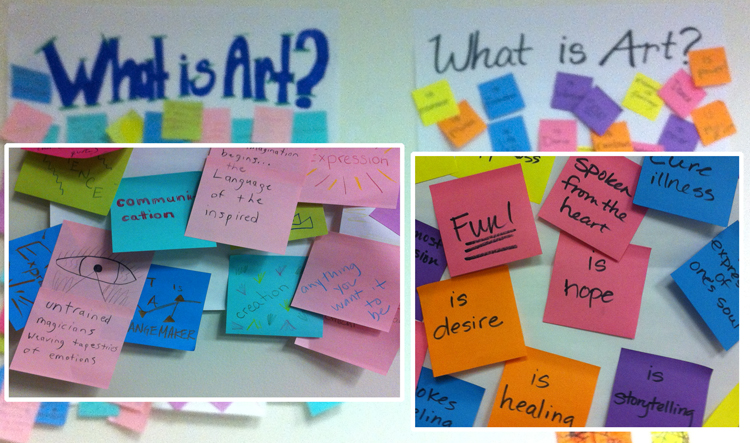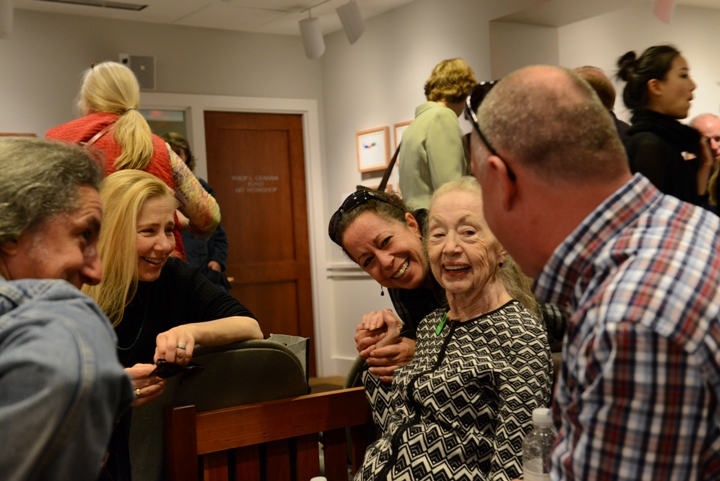At last night’s Phillips after 5, Michael Garstang, an atmospheric scientist at the University of Virginia’s Department of Environmental Sciences provided his perspective on the Kirkeby exhibition. He began his talk by making connections between art and science saying, “Both fields draw upon creativity as the prime motive. . . both are products of infinite, incremental steps, and both must be founded upon a preconceived framework.”

Per Kirkeby, Untitled, 2006. Tempera on canvas, 78 3/4 x 98 1/2 in. Courtesy Michael Werner Gallery, New York, London, and Berlin
Garstang talked about the infinite process of sedimentation, laying down grain by grain to form layers, strata, and structures in his discussion of this untitled work, which Kirkeby painted in 2006. He interpreted the parallel bands at the center of the canvas as possible “fossilized tree trunks,” citing Kirkeby’s writings on trees in which the artist explains, “I don’t think I have ever drawn a whole tree.” Despite the painting’s framework, Garstang noted that Kirkeby “interrupted the form with discordant shapes juxtaposed with a sphere.” He wondered “Is it detritus? Glacial till? Blue ice?” Like Kirkeby, Garstang was reluctant to interpret the end result saying, “I’ll let you sort this one yourselves.”


